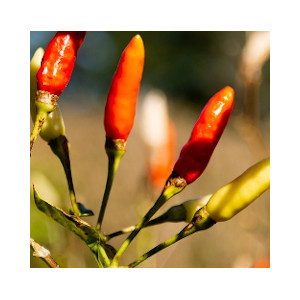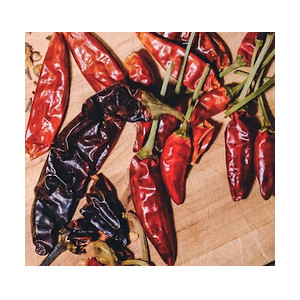Description
Key Facts
- Great for Guyana or Mexican recipes – and Piri Piri Chicken. (VH).
- Seriously Hot
- Takes about 6 months to grow
- Available from Amazon
Seriously Hot & Tasty pepper that looks stunning
It can be slightly difficult to grow – but not if you follow the advice further down the page.

Background
The african birdseye chilli pepper (Also know as Piri piri peri peri, African devil or Red devil pepper)
- Originally from Mexico but brought to South East Asia in the 16th or 17th century.
- Seriously Hot & Tasty
- Ideal for Guyana & Mexican recipes – and a key ingredient for Piri Piri Chicken
- Days from seed to harvest – about 150 (6 months)
- About 60 to 70 cm high
Typical African Birds eye Chilli Pepper Recipes
The african birdseye chilli pepper is great for Guyana or Mexican recipes – and of course a key ingredient for Piri Piri Chicken .
Also know as Piri piri peri peri, African devil or Red devil pepper, it is a seriously hot and tasty chilly pepper.
Example recipes:
- Fermented Hot Chilli Pepper Sauce
- Peri Peri Chicken
- Mozambican Hot Sauce
How to grow African birdseye chilli pepper at home

The piri piri pepper can be grown from seed and generates a hardy plant ideal for cuttings, etc.
This is a similar chilli to that used by the Nandos chain of chicken restaurants.
How to grow the pepper outdoors (garden, balcony, etc.)
The african birdseye chilli peppers prefer direct sunlight, well drained soil and need to be frost free.
If you want to grow them outdoors then the best option is to start them indoors about 8 to 12 weeks before the last frost and then transfer them when the nights are warmer.
If growing outdoors then sow from mid February to mid June. The temperature, moisture, and air circulation all play a role in growing plants from seeds. Too little heat, too much moisture, and lack of air circulation will cause poor results.
Pots & Soil
Do not use jiffy peat pots, plugs, or potting soil as the soil becomes too dry or too wet, which can lead to low germination, disease and fungus. Fill small cells or trays with a good sterile seed compost and sow the seeds on the surface. “Just cover” with a fine sprinkling (3mm) of soil or vermiculite. Keep the compost moist – don’t let the top of the compost dry out (a common cause of germination failure)
They can be grown easily from seed but it’s very important to provide the right amount of moisture and to thin them out as they grow.
Fully grown they can be upto 60 to 70 cm in height i.e. an individual pot might be the best option.
How to grow the african birdseye chilli pepper indoors (hydroponics or aquaponics)
Because of the importance of moisture and light the peppers are ideally suited for hydroponics with additional lights.
Not only are they easier to grow, but you will also get fast results.
More information





Minze Vries –
I would give more if could. Fresh african birdseye chilli peppers are simply so much better than shop bought ones (if you can find them). Well worth the effort in growing